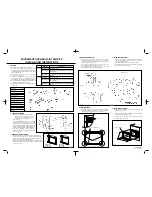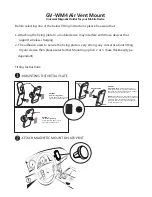
User Manual
Airbridge cBTS3612 CDMA Base Station
System Description
2 Hardware Architecture
2-2
&
Note:
In Figure 2-1, the duplexer is CDU, and actually the right duplexer should be selected according to the
band class BTS supported. CDU applies to 800MHz band and 450MHz band, DFU applies to
450MHz band, and DDU applies to 1900MHz band, as for the difference between the CDU, DFU and
DDU, please refer to "2.3 RF Subsystem".
BTS is mainly composed of baseband subsystem, RF subsystem, antenna & feeder
subsystem (which comprises RF receive/transmit antenna and GPS/GLONASS
receive antenna) and power supply subsystem. Baseband subsystem in physical
structure also carries a clock synchronization unit, receiving GPS/GLONASS clock
and providing system time, synchronous clock and frequency reference.
I. Baseband subsystem
The main functions of baseband subsystem are: processing Abis interface protocol,
modulating/demodulating baseband data, channel encoding/decoding, processing
protocols of physical layer and MAC layer on air interface, system
operation/maintenance and connecting baseband data optical interface of RF
module.
Baseband subsystem is located in the BTS baseband subrack. It consists of BTS
Control & Clock Module (BCKM), BTS Resource Distribution Module (BRDM), BTS
Channel Processing Module (BCPM ), BTS Control Interface Module (BCIM ) and
CDMA Baseband Backplane Module (CBKM). Functions of all boards are
highlighted as follows:
1) BCKM
At most 2 BCKMs are configured in hot standby. BCKM receives GPS signals (or
other synchronization satellite signals), generates local clock and provides time
signals 16
%
1.2288MHz, 10MHz, PP2S for the boards in the system. This is mainly
the responsibility of the clock module of BCKM. Besides clock signal, BCKM also
provides main control function for channel resources. Its MPU module performs a
number of operations and functions such as resource management, equipment
management, performance monitoring, config uration management, software
downloading, MPU active/standby switchover, operation & maintenance (O&M),
environment monitoring interface, as well as board control inside the system.
2) BRDM
BRDM is logically located between BTRM and BCPM. The data sent by BTRM
module are sent to BRDM via the optical fiber. Then BRDM distributes the data
before sending them to BCPMs via the high-speed data bus. BRDM can also build















































